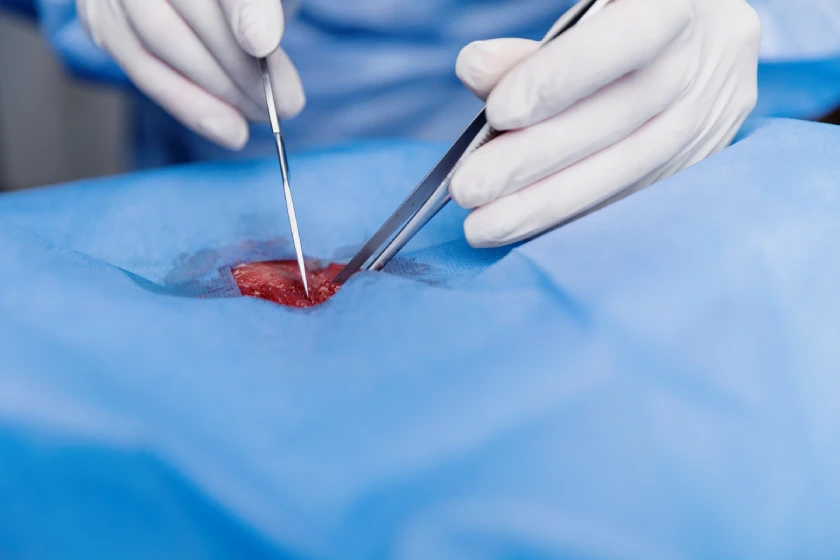
When it comes to treating complex blood vessel problems, modern medicine has made remarkable progress. One of the most advanced options available today is endovascular surgery.
Unlike traditional open procedures, this minimally invasive approach allows patients to benefit from faster recovery times, less pain, and highly effective results. However, knowing what to expect before and after endovascular surgery is crucial for peace of mind and better preparation.
Whether you are undergoing treatment for peripheral vascular disease, aneurysms, or blocked arteries, understanding the process can make your journey smoother. In this blog, we will break down everything you need to know about what happens before, during, and after endovascular surgery, along with expert tips for recovery.
What is Endovascular Surgery?
Endovascular surgery is a minimally invasive procedure used to treat diseases of the blood vessels. Instead of making large incisions, an endovascular surgeon accesses the vascular system through small punctures, often in the groin or arm.
With the help of advanced imaging, catheters, wires, and stents are guided inside the blood vessels to restore proper circulation. Endovascular vascular surgery has become a preferred option for many patients because it offers effective results with fewer complications compared to traditional surgery.
Endovascular surgery procedures may include angioplasty, stenting, aneurysm repair, and clot removal. These treatments are performed at specialized endovascular surgery centers by highly trained endovascular specialists who ensure precision and safety throughout the process.
Before Endovascular Surgery
Preparation is one of the most important steps before endovascular surgery. Patients typically undergo diagnostic tests such as ultrasound, CT angiography, or MRI scans to determine the extent of the vascular problem.
Your endovascular surgeon will review your medical history, current medications, and any allergies. In some cases, you may be instructed to discontinue certain medications, such as blood thinners, prior to the procedure. However, most times the blood-thinning medicines would be continued during the procedure stay.
It is also important to fast for several hours before the surgery. Patients should arrange for someone to accompany them to the endovascular surgery center and help them return home safely after the procedure. Good preparation ensures that the endovascular treatment goes smoothly and reduces the risk of complications.
During Endovascular Surgery
Endovascular surgery procedures are performed in a specialized operating room equipped with advanced imaging systems. Local or general anesthesia may be administered depending on the type of treatment. The endovascular surgeon makes a tiny incision, usually in the groin, to insert a catheter into the blood vessel. Guided by X-ray imaging, the surgeon carefully navigates the catheter to the site of the blockage or aneurysm.
Depending on the condition, angioplasty balloons may be inflated to widen narrowed arteries, stents may be placed to keep vessels open, or coils may be inserted to treat aneurysms. Throughout the procedure, endovascular specialists monitor your vital signs and ensure that everything is progressing safely. Most procedures take between one and three hours, depending on the complexity.
After Endovascular Surgery
Immediately after the procedure, patients are moved to a recovery area for monitoring. Pressure is applied to the incision site to prevent bleeding, and patients are usually required to lie flat for a few hours. In many cases, endovascular treatment allows patients to return home within 24 to 48 hours. Some may even go home the same day if the procedure is less complex.
Before and after endovascular surgery, it is essential to follow all medical advice. Patients are advised to avoid strenuous activities for a few days, keep the incision site clean, and watch for any signs of infection or unusual bleeding. Regular follow-ups at the endovascular surgery center ensure that the treated blood vessels remain healthy and functional.
Tips for a Smooth Recovery
- Follow your endovascular surgeon’s instructions closely.
- Take prescribed medications on time.
- Stay active with light exercises such as walking to improve circulation.
- Maintain a healthy diet to support vascular health.
- Attend all scheduled follow-up appointments with your endovascular specialists.
Conclusion
Endovascular vascular surgery has transformed the way vascular diseases are treated, offering patients a safer and more effective alternative to open surgery.
By understanding what to expect before, during, and after endovascular surgery, patients can approach the procedure with confidence. With the right preparation, professional care at an endovascular surgery center, and a commitment to recovery, most individuals experience excellent results and long-term health benefits.
Frequently Asked Questions
You may need to stop certain medications, fast for several hours, and undergo diagnostic tests. Your endovascular surgeon will provide clear instructions tailored to your condition.
A catheter is inserted into a blood vessel, guided by imaging to the affected area, where angioplasty, stenting, or other procedures are performed to restore circulation.
Most patients experience minimal discomfort. Local or general anesthesia ensures the procedure is virtually painless.
Endovascular surgery procedures usually take between one and three hours, depending on the complexity of the case.
You will be monitored in a recovery area, required to rest, and may be discharged within 24 to 48 hours. Recovery is usually quicker compared to traditional surgery.

Dr. Sumit Kapadia
MBBS, MS, MRCS, DNB-Fellow



